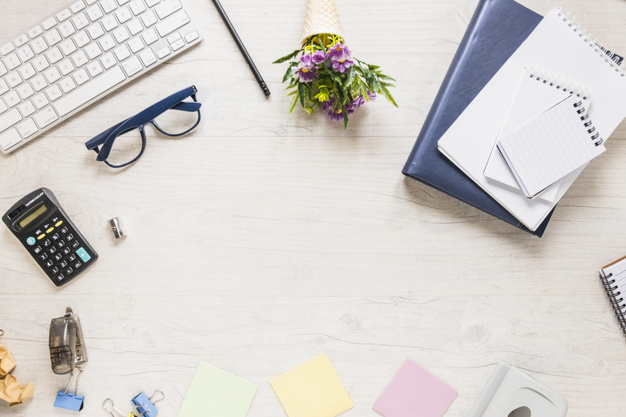Do you want to learn how to organize your belongings so that you have an organized home? Follow these steps to organize your belongings without feeling lost.
Step 1: What do you own?
You need to know what you own. As time passes, you won’t realize the number of things that you possess because it keeps increasing. A study has found that people tend to accumulate more than they get rid of. This means you will probably find lots of things that you probably forgot about. Before you start to organize, you need to know what all you own in your home. If you have more storage, then you are likely to find more things in your home that you forgot about. You can list your possessions based on which category they fit under.
When you are writing the list of possessions, you can write the owner’s name right next to them. If you are living with a family, you can write their initials to indicate that the items belong to that particular individual. This will make it easy at the later stages when it comes time to start moving and organizing your storage.
Step 2: How do you store your belongings?
Before you take everything out to see what all you have, you need to write where they are stored at present. Write next to each category of items where exactly the items are stored. If you have your shoes all stacked on a shoe stand, then write that. Do this for all the categories carefully. Please write the categories and their location of storage at the same time. This will help you keep a note of where you had stored your belongings in the first place. It will then make the path to organize belongings much easier.
Another reason why this is a great way to organize is that you will be able to see how you have organized in the past and how you can improve. Do you store in containers? Do you store things in bags? Be specific about how you store your belongings so that you can them improve the way you store.
Step 3: Where can you store and organize possessions?
When you are done with the previous two steps, the next one is the storage space that you should think about. You need to think about where you can store in terms of the storage area as well as the containers in which you can store. You can list and write the storage places and contains where you can store the items that you listed earlier. This will ensure that you know where storage is possible and this will lead to effective storage of your possessions. It will make it easier for the next steps when you are moving your belongings too.
One important tip that you can write how large the container or area is. You don’t have to be too specific although you can be if you wish to do so and if you have the time. You can write how large or small the container or space is for storage. Think carefully before you write so that you include all the containers and areas in your house where you are willing to store items.
Step 4: Decide how you want to organize belongings.
You need to think about how to organize possessions. But before you get to that, you can categorize the possessions in three different categories; personal things, things that should be stored together, and things that you should separate. When it comes to personal things, you can write personal or P next to the personal item. For the things that you want to store together, you can write an ST. You can have separate items that belong to separate categories stored separately. You can write an S next to such categories or items.
The reason why this is an excellent way to organize is that you will be able to separate the different types of belongings. It will decrease confusion and increase the effectiveness of the process. You will be clearer about the types of belongings that you have and the categories that they belong to for more effective organizing.
Step 5: Think of where the items can be stored.
The main reason to organize belongings is to ensure that you can find things faster and you remember where you keep things in your house. You should think about convenient first before you start to think where your belongings can be stored. For example, storing all kitchen related items in the kitchen is the best course of action. You can store items depending on where they are used so that you can easily get to them. You should think about the requirements of the item, how often you use it, how much space is required, and what items you want to store with it.
It is a good idea if you speak to all your family members so that everyone is aware of the changes and how you are planning to organize. You need to dedicate time so that you can plan together and you can take inputs from them. Your main aim is to make sure that your items can be easily found and reached. Try to keep the items for errands in a separate area.
Step 6: Make plans by using a planner to organize
Don’t just start with moving your stuff. You will get frustrated. Plan it out in as much detail as you possibly can. To do this, it is always a great idea to free up your mind so that you are relaxed. Otherwise, you won’t get the best ideas to work with. When you are relaxed, then you can mark the days on your planner about when you are going to start to organize belongings. This will make you mentally prepared for the time when you have to organize your belongings and possessions. You can take the help of someone else to decide as well.
Step 7: Start to organize possessions.
This is when you start to organize your things in actuality. You need to make up your mind about where you are going to start from and then start. You need to empty the area or room so that you can start organizing. You can then proceed to clean the area or room. You should ideally place the items that you are moving close by. For the items that are too heavy to be moved, take help from someone else if you want to move those items. Else leave them out and proceed with the other belongings that you have.
You can place the small items in see-through bags, and you can keep larger containers inside. The container with the small items can be in front of the larger container for easy accessibility. Try to avoid putting your belongings on the floor and label the containers so you can retrieve your belongings faster. You can write what you have stored where too.
Now that you are aware of how to organize belongings, you can take your time to plan before organizing. This will ensure that you find what you need whenever you need it, and your home is neatly organized the way you want it to be.



